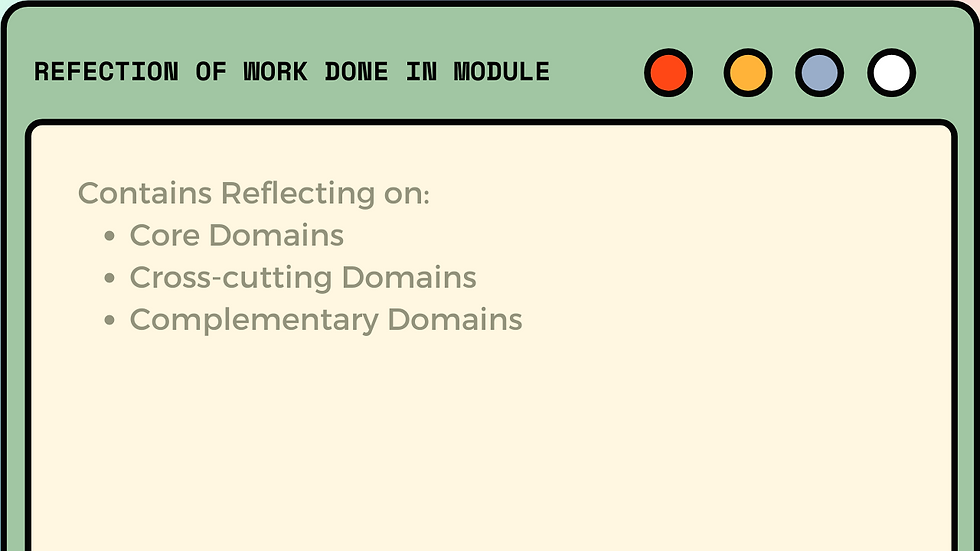Week 9: Reflection
- 2428616
- Oct 9, 2022
- 3 min read
Updated: Oct 31, 2022
This week’s module was about Medicines and Technologies. What stood out to me was disease prevention. Disease prevention covers measures not only to prevent the occurrence of disease, such as risk factors reduction, but also to arrest its progress and resume its consequences once established. It encompasses various actions aiming to promote health, preserve health, restore health when it is impaired and minimize death. These are achieved through levels of prevention which are called primordial, primary, secondary, and tertiary. Primordial prevention is the actions and prevention measures that inhibit the emergence and establishment of environmental, economic, and social conditions, and cultural patterns of living, known to increase the risk of disease. Primary prevention is specific prevention by personal and communal efforts before disease occurs. Secondary prevention is a set of measures available to individuals and communities for early detection and prompt intervention. Tertiary Prevention targets people with symptomatic diseases. Measures aimed at softening the impact of the disease. Understanding the levels of prevention requires a good understanding of the natural course of diseases. (Pandve,2022)
Primordial prevention reduces/minimises exposure in the population through health promotion and addressing social determinants of health. creating conditions that allow people to make healthier lifestyle choices. At the primary prevention level, intervention occurs there to prevent exposure to risk factors and thus reduce the number of new cases of diseases. At the secondary level, intervention happens for the early detection of diseases in asymptomatic people. At the tertiary level, interventions happen here to cure or control the disease, limit disability or minimise the risk of death.
Disease prevention ties in well with the community diagnosis approach of population health, which we learnt in week 2. Community diagnosis identifies the main health problems in a community and the determinants of health for a community. Through the diagnosis, an intervention can happen. An intervention targets the most common problems and their causes. Intervention target social determinants of health just like primordial prevention.
Public Health government institutions are closely related to primordial. Disease prevention goes well with the levels of care, that were taught in week 5, which are populous, folk, and professional. Populous and folk are closely related to primary prevention. Professional with secondary and tertiary. Firstly, it illustrates that health is a communal effort and not just something that can only be achieved through health professionals. Secondly, it expands the meaning of intervention to any level and allows it to not just be about the government. It adds meaning by including asking for advice on health from your family as an intervention, going to the doctor as an intervention, and traditional medicine as an intervention.
Disease prevention can be applied to health scientists. On the primordial level, they can advocate for social change to make physical activity easier, in the primary level they can give primary care advice as part of routine consultations, on the secondary level they can provide care for risk factor reduction of chronic disease, falls and injury and for the tertiary level they can exercise advice to rehabilitate the patient and prevent further health deterioration.
References:
Pandve H.T. Changing concept of disease prevention: From primordial to quaternary. Arch Med Health Sci 2014;2:254-6 Available at: http://www.amhsjournal.org/article.asp?issn=2321-4848;year=2014;volume=2;issue=2;spage=254;epage=256;aulast=PandveLinks to an external site. (Last accessed: 31 October 2022)
I have changed the typography to the requirements listed, however, it may not show well so I have attached the word document below.


Comments